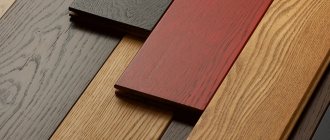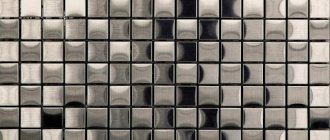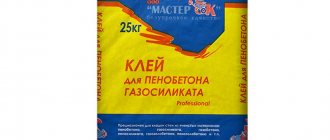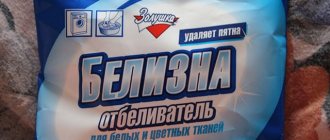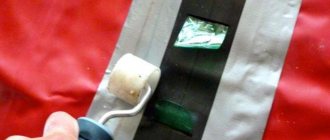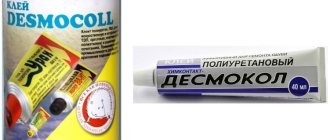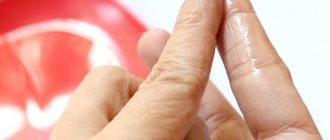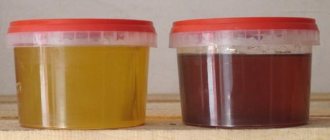Easy to use PVA glue is a universal mass, popular in everyday life and in the professional sphere. This product performs many functions and is actively used in construction, handicrafts, and repairs. The polyvinyl acetate composition is capable of connecting almost any surface and improving the quality of different mixtures. It is for these reasons that such glue is known not only to kindergarteners and schoolchildren, but also to adults who use its abilities to the maximum.
Types of PVA glue
Today there is more than one composition of PVA glue. Varieties are classified depending on technical characteristics, industry of application and other factors.
The following types of PVA are found on store shelves:
- Super (PVA-M). It contains additional components, due to which, after the glue dries, the strength significantly increases. It is recommended to use for household needs, gluing any wallpaper, installing tiles. It is packaged in small tubes with a spout and a lid, so that if desired, you can use it to make a thin seam to glue lagging elements or restore small damaged areas.
- Stationery (PVA-K). It is actively used in everyday life, usually for children's crafts. The product is available in liquid or dry form. In the first case, it is poured into small bottles, in the second, it is formed into solid PVA pencil glue.
- Universal (PVA-MB). The composition is always ready for joining cardboard, leather, wood and glass products. Ideal for processing carpet, linoleum, serpyanka, etc. The mixture is often sold in buckets.
- Construction (waterproof PVA emulsion) with polymerizing particles is intended more for compacting building mixtures, but can also be used as an independent tool for working with durable and heavy materials. In stores, this glue is found both in small tubes and in jars or buckets.
- Household (wallpaper). This variety provides good adhesion to concrete, brick, plasterboard and plaster. Also suitable for gluing heavy canvases and working with paper, foam rubber, and textiles. The product is usually sold in large buckets or jars.
Glue Features
From school, many people know silicate stationery glue - a viscous viscous substance that resembles a gel at the crystallization stage. In industry and construction, the substance is often called “liquid glass”, in fact, that’s what it is. The improved sodium silicate formula is a necessary component in some processes in the chemical, foundry and metallurgical industries.
Everyone knows what office glue is. This is an affordable means for gluing (fastening) smooth surfaces made of different materials. The most common use of this simple mineral compound is for gluing sheets of paper and thin cardboard.
Modern Officespace adhesive is widely known in office practice, but it can be used much wider than stationery. The fluid substance has been widely used for almost 200 years, and during this time various uses have been found for it.
The most common use of this simple mineral compound is for gluing sheets of paper and thin cardboard.
Explanation and technical specifications
PVA glue (interpretation) – polyvinyl acetate (PVA). The three-letter abbreviation comes from this component, since the adhesive mass contains about 95% of it.
In accordance with the state standard, PVA glue technical characteristics should be as follows:
- resistance to moisture, temperature changes;
- drying time on surfaces – on average 24 hours;
- load – 550 N/m;
- absence of a pronounced specific odor;
- color – uniform;
- elastic seam.
Other characteristics are listed below. They are worth considering in more detail, since these are the points that characterize such a composition as PVA. Moisture resistance is indicated by the index D1…D4.
The higher the number, the stronger the moisture resistance. Very important for carpentry work.
Advantages and disadvantages
The glue is very convenient to use, easy to apply and does not spread. When it is thick, it can be diluted with water, although this does not apply to all types of PVA. How long does it take for the product to dry? Drying time depends on the ambient temperature, area of application and is 12-24 hours, which is a low indicator for adhesives.
Other advantages of the composition:
- does not include substances harmful to the body, approved for use by children from 3 years of age;
- safe in contact with skin, you can use the product even without gloves;
- is not flammable or explosive;
- resistant to mechanical stress;
- plastic, elastic, so the adhesive seam does not deteriorate under dynamic loads;
- withstands several cycles of freezing and thawing;
- can be used even in enclosed spaces due to the absence of unpleasant odor and harmful fumes;
- has low consumption - 100-500 g/sq.m. m;
- has excellent adhesive properties - up to 550 N/m;
- does not collapse under the influence of ultraviolet radiation;
- perfectly fills all cracks, cracks, gaps, holes;
- sold in a variety of packaging sizes;
- can be used independently or as a base for primers and putties;
- dried glue does not shrink and does not deform the glued product.
It is not difficult to wipe off glue stains from different surfaces. Despite its solubility only in chemicals, PVA is washed off with plain water. The product also has disadvantages. The glue is not stored for too long - up to 6-12 months, after this time it can deteriorate irrevocably. If there are additional chemical components, the degree of safety may vary, and you will have to use personal protective equipment to work with the glue.
What is glue made from?
Understanding production technology is not difficult if you have the necessary equipment. A completely different question is the chemical composition of PVA glue.
The following components are used for manufacturing:
- binding raw materials;
- thickener;
- adhesive dispersion;
- preservative;
- coalescent
At first, this list is surprising, but it’s enough to remember what was taught in chemistry lessons, and everything will become quite logical. When purchasing materials separately, their cost does not seem high, but when all these components are combined, the amount comes out to be considerable. Fortunately, sales of glue bring in many times more profit and all expenses are easily covered.
Glue composition
Liquid glass was first produced experimentally in Germany. The technology for its production turned out to be simple and accessible, and the natural raw material was cheap and widespread - silica SiO2.
Bavarian Chemist Johann Nepomuk von Fuchs in 818 was able to obtain an aqueous-alkaline solution of polysilicates:
- Sodium – Na2O(SiO2)n;
- Lithium Li2O(SiO2)n;
- Potassium – K2O(SiO2)n.
Natural deposits of natural silicates necessary for the production of liquid glass are ubiquitous. They can also be synthesized artificially. The availability and prevalence of office glue is explained by its low cost and wide range of applications.
Natural deposits of natural silicates necessary for the production of liquid glass are ubiquitous.
Production technology
Enterprising people who know what PVA glue is can easily make money from its production. This is not surprising, because the technology for producing the composition is not that complicated.
The adhesive production process includes the following stages:
- Preparation of raw materials.
- Crushing components.
- Selecting the required portions and determining the weight of the raw materials.
- Processing of ingredients.
- Cooking the substance.
- Infusion of the remedy.
- Distributing the glue into portions and placing it in packaging.
Special equipment is necessarily used in production: a mortar mixer, a dissolver, a filling machine, etc. Manually, as a rule, only the placement of raw materials into the required tank occurs.
When creating glue in factories, beginning manufacturers often have problems due to the properties of this composition. The fact is that PVA has a high viscosity, which complicates the procedure for kneading, dispersing and delivering it to the packaging site.
GOST PVA glue
It is important for every buyer to know the state standard of adhesive mass so as not to waste money on a product that does not meet the quality and, accordingly, is not able to perform all its functions.
The number of PVA glue according to GOST is 18992-97 or 18992-80.
PVA glue, properties after drying
One of the signs of an adhesive composition according to the rules is its dry state. After drying, the properties are preserved, the glue forms a transparent viscous film. It can be easily seen visually. It is through this film that the materials are held together. There is no definite answer to how long PVA takes to dry. On average about a day.
The probable answer is in the instructions. It depends on the area of application, the area of smearing, the temperature of the room and the use of a hair dryer, the number of layers and the properties of the material.
Container and packaging
Today, on store shelves you can easily find PVA glue in jars, buckets, and tubes. All these containers are made only of plastic. Spouts are provided only on tubes, so when using adhesive in a bucket or jar, you additionally need to purchase a device for conveniently distributing the mixture over the surface.
As for packaging, the maximum volume of PVA glue is 10 kg. This quantity of the composition is sold in buckets. Smaller volumes – 5 kg, 2.5 kg, 1 kg, 250 g, 100 g, 70 g, 50 g.
Glue consumption
One of the important characteristics, which is also an advantage of the product, is the volume of its use per standard area. Thus, the consumption of PVA glue per 1 m² ranges from 100 to 500 g. Here everything depends on the weight of the materials being joined, as well as the characteristics of their surface.
Best before date
The glue can be stored for 12 months. But the manufacturer makes some of its varieties, for example, building composition, more durable and doubles this period of time - up to 24 months.
After the expiration date, PVA glue acquires an unpleasant and strong odor, so even if you forget about the expiration date, it will not be difficult to distinguish an unusable product.
Tips for working with PVA construction adhesive
If necessary, apply construction adhesive to the surface using a roller or plastic spatula with a fine tooth. A plastic spatula is used when gluing linoleum to a wooden surface. The glue must be applied to the center of the surface or part, after which it is evenly distributed over the area to be treated. In the absence of a roller, working with a brush is allowed, which complicates the uniform application of PVA.
When using construction PVA as a plasticizer for masonry mortar, 5% PVA per weight of binder will be required. In the same ratio, PVA is added to repair mortars used for old screeds. If a composition is being prepared for pouring the main screed indoors, then the glue content can be increased to 20% of the binder. For tile adhesive, PVA is introduced in an amount of 20% of the total mass of the mixture. In plaster cement-sand mixtures, 50 grams of PVA are added for every 10 liters of composition.
Is it worth using expired composition?
Consumers ask this question quite often. Although the shelf life is given a long time, people still miss it, and when they feel sorry for the money spent and don’t want to throw away the composition, they try to use it faster.
It is difficult to say whether it is possible to use expired PVA glue. It all depends on the purpose for which the composition needs to be used and how long ago its expiration date expired. So, if the product is literally a month or two out of date, it is still quite possible to use it as a primer or glue paper or cardboard.
But if the permissible storage period expires by more than 3 months, the product will simply lose all its properties and will not be able to combine even simple materials. In addition, lumps may appear in expired glue or its consistency will resemble jelly, which will make use not entirely convenient.
Ready-made synthetic wood glue: types
Ready-made synthetic wood glue is also divided into the following subtypes:
- For handicrafts - it is characterized by maximum harmlessness and does not cause any harm to craftsmen. Absolutely non-toxic. It copes well with simple wood processing and gluing various materials to it.
- “Moment” type adhesive – available in a wide range. Involves fast and durable gluing of wooden surfaces. It has a long shelf life and can be used even some time after the initial opening of the package.
- Waterproof - in addition to its main function, it can serve as protection of surfaces from water ingress. Helps extend the service life of a wooden product and guarantees a long-lasting effect after repairs.
Recommendations for selection
When choosing an adhesive mixture for joinery, some potential buyers encounter certain difficulties. Since such an adhesive does not belong to the category of frequently used, many are lost in the variety of options presented.
When choosing such glue, you should focus on its planned use. So, if efficiency is a priority, it is better to take Moment wood glue. It will allow you to restore the integrity of the product in the shortest possible time.
For needlework, you need to use a type of glue specially designed for this purpose. It hardens much more slowly, which allows you to correct the glued part if necessary. In addition, the mixture is non-toxic, and therefore is ideal for long-term contact.
You also need to remember that you should buy carpentry adhesive in Moscow only at trusted points of sale, which can guarantee decent quality of the products sold. Under no circumstances take this product from your hands, as there is a risk of purchasing a low-quality or even unsafe mixture. Take a closer look at the expiration date: expired adhesive has lost its adhesive properties and may still be hazardous to health.
When using glue, carefully follow the manufacturer's instructions. The manual for each product must indicate the nuances of the correct use of glue, which guarantees high quality of the final result. If you still have questions, we recommend watching a video on how to make wood glue at home:
Manufactured in Russia, famous brands
The number of PVA glue manufacturers in Russia is not as large as it might seem at first glance. But consumers are quite satisfied with the range of products they present on the market.
The most popular adhesives today are Expopribor and Moment. They are sold at competitive prices, but each product has its own distinctive features. They are described in more detail below.
PVA glue Expopribor
The popular PVA roller glue from Expopribor belongs to the premium class. It is intended for work with paper, cardboard, wood, fabric, leather and ceramics when thin and neat seams are required. This product is easy to use, economical in use and does not pose a threat to human health, since it contains no toxins.
The glue is sold in standard packages with a ball applicator, due to which the layer is always distributed evenly. A spring-loaded ball made of stainless steel serves to protect against leakage of the mass in any position of the packaging.
Glue Moment PVA
The adhesive mass is available in different versions - for paper and cardboard, with protection from moisture, for working with wood, leather and other materials. The name of the glue speaks for itself - it bonds surfaces instantly. But you shouldn’t take this too literally, since it still takes some time for it to dry and, at the same time, reliably connect objects.
Many consumers conduct various experiments with PVA Moment glue, adding it to building mixtures. The result, oddly enough, is often pleasantly surprising, although unsuccessful experiments also occur in practice. The product is packaged in small tubes, buckets and containers. Therefore, if necessary, you can easily find a convenient option for yourself.
Correct Application
Each version of the adhesive mixture has its own characteristics of use. Therefore, before use, carefully read the instructions that come with the product. If you don't have one, use the tips below.
Apply with a brush, or less often with a notched spatula. The glue should be evenly and thinly distributed over both surfaces that will be held together. If necessary, after the first layer has dried, apply a second one. The glue is allowed to dry and absorb a little, then the parts to be glued are pressed tightly.
Reviews of some formulations
People who regularly use PVA glue leave reviews about it quite often. For example, let’s take the compositions described above – Moment and Expopribor. Consumers see the same advantages and disadvantages in them.
As for the positive aspects, the masters note:
- efficiency;
- resistance to water, mechanical, thermal, ultraviolet influences;
- economical consumption;
- a wide selection of containers in which products are packaged;
- no pungent odor;
- the ability to be used as an independent product or as an element of a building mixture;
- not explosive.
Speaking of cons, consumers tend to only complain about the short shelf life. Otherwise, no negative aspects were found.
Packaging, packaging forms
Today, even children know what silicate glue looks like, although it is difficult to do without it in other sectors of the national economy. The predominance of beneficial properties and the availability of raw materials guarantee the demand for silicate composition in modern practice. The office supply departments offer a wide selection of office adhesive in the form of tubes, bottles and sticks.
Schoolchildren should know that the thick transparent suspension should not get into the eyes or hair. However, traces of transparent stationery glue can be easily washed off after classes with running water.
The release form is designed in such a way that the gel-like liquid stains your hands as little as possible. Therefore, Office Space glue and other brands are offered in plastic bottles, in the form of rods or pencils.
Liquid silicates can be stored in a glass container with a tight-fitting lid, away from small children.
The release form is designed in such a way that the gel-like liquid stains your hands as little as possible.
PVA rating
Separately, it is worth considering several products that are often purchased and used for different purposes. These include:
- Universal PVA Moment Joiner. An excellent option for working with wood of any species. PVA glue was included in the rating due to its quick drying, reliable connection of parts and the absence of marks on surfaces after work.
- Expo device Slide-Stick. The product is more often found in small bottles. It is usually used for small jobs with paper, cardboard, and wallpaper. The composition is characterized by frost resistance and efficiency.
- Beam PVA-M. The product for gluing various surfaces is packaged in standard bottles with dispensers. You can use it at home, in the office or on the street, since this mixture is not afraid of temperature changes.
- Super PVA D2 moment. A universal option with increased adhesion strength and reliability. The composition is ideal for construction work.
- Moment Super PVA D3. Moisture-resistant adhesive for wood, veneer, chipboard and other similar materials is characterized by strength and reliability, like the previous product. The most important thing is that it contains no solvents or toluene.
- Expo device White Glue. Glue without a specific odor is usually sold in compact bottles with an elongated spout. It holds different surfaces together, but during repair work it is better to combine it with more effective mixtures.
- OfficeSpace PVA glue Universal. The product is resistant to frost and moisture. It is often sold in small jars without dispensers, so for use you will need to additionally purchase a brush.
PVA glue, which is better?
Buyers often wonder how to choose from the variety available. Experienced specialists in these cases point to PVA-Universal. This choice is explained by the possibility of using the composition both in handicrafts and in construction.
It is perfect for working with paper and cardboard, improves the quality of cement and other mortars, and also helps, if necessary, to hang wallpaper of any type.
What glues PVA glue
White or transparent PVA glue can reliably connect not only paper and cardboard, which every person has become accustomed to since childhood. Depending on the type of composition, it can glue:
- wood, metal;
- carpet, linoleum;
- foam rubber, fabric, serpyanka.
Where is it used?
The most common area of using PVA is children's creativity. The adhesive mass is actively used in kindergartens, schools, and clubs. And the main advantage of glue here is that it can not only connect parts, but also add durability to gouache.
In modern production, building mixtures are also prepared from PVA glue, where it serves as a sealant. In addition, the composition is used for gluing wallpaper, installing tiles and parquet, etc. Its strength is high enough to hold such products not only on the floor, but also on the walls and ceiling.
Features of universal and construction adhesive
Universal adhesive is used for combined materials. The composition has enhanced adhesive properties, so it is suitable for smooth surfaces. The universal composition is used for:
- cardboard;
- glass;
- paper;
- metal;
- carpet;
- serpyanka;
- linoleum.
For a high-quality connection, it is better to use a composition marked “MB”; PVA-M glue is cheaper and has average characteristics. The temperature threshold for universal adhesives has been increased to -20 degrees.
In construction, PVA is practically not used on its own, but is added to mortars as a plasticizer or amplifier. Indispensable when laying bricks, pouring screed or laying tiles. Construction adhesive has increased frost resistance, so it is used for exterior finishing. The amount of plasticizer or enhancer depends on the type of building mixture and its volume. An adhesive that is resistant to temperature changes down to -40 degrees is suitable for construction work.
Instructions for working with glue
For each PVA glue, the instructions for use are simple and clear. When unpacking the composition, you should be sure to read the insert inside, which talks about the use of this particular type of adhesive. If instructions are not provided in the kit, it is better to work with PVA according to standard rules:
- The surfaces to be glued must be cleaned of dirt and dried before applying the adhesive.
- The mass is distributed with a brush or, in rare cases, with a spatula with teeth.
- The composition should be applied evenly and not too thickly.
- The second layer, if required, may be applied only after the previous one has dried.
- It is better to press the parts to be glued tightly against each other and hold for several minutes.
Temperature of storage, work with PVA and operation
It is also important to consider the rules for storing and using PVA glue. The temperature at which this composition is used cannot fall below -20 degrees Celsius. The maximum indicator is considered to be +100 degrees - in this case the mass begins to collapse. The same applies to the storage of PVA.
The glue can be used both indoors and outdoors. Since it is moisture resistant, it is allowed to work with the product during precipitation (not heavy), without fear of deterioration in the properties and quality of the result.
How long does it take to dry?
Among other things, every consumer needs to know how long PVA glue takes to dry. This period of time is different for each purpose of using the composition. So, when joining the paper, 15 minutes is enough for complete drying. If construction and repair work is carried out with glue, the average drying time is 1 day.
It is important to remember that a thin layer of adhesive dries much faster. Therefore, it is better to distribute the product evenly using special devices. In addition, to speed up the drying of the PVA, you can use a hairdryer or microwave to increase the temperature.
How to dilute PVA glue
People often ask whether PVA glue can be diluted with water, because this component is ideal for solving the problem of a thickened composition. In some cases this is allowed. The most important thing is to add liquid literally gram by gram.
This ingredient does not impair the properties of household and office glue. But for other types of PVA, it is worth using acetone as a diluting component, because water in any form contributes to the loss of their adhesive function.
How to thicken PVA glue
Along with methods of diluting the composition, craftsmen are also interested in how to make PVA glue thick. Here things are simpler.
To thicken the mass, simply leave it in an open container for a day.
During the specified period of time, excess moisture will evaporate and the mixture will become ready for use.
Reasons and rules for dilution
What is the best method to use if the glue has thickened? The easiest way is to dilute it with water, adding it literally gram by gram, so as not to make the composition too liquid. Water will not deteriorate the properties of office and household adhesives. All other types of PVA, especially construction grade, are strictly prohibited from being diluted with water; they will lose their adhesive function. How to dilute this composition is indicated on the packaging; acetone is usually suitable for this.
If you make the composition more liquid, its consumption will decrease. You can also dilute PVA to obtain a primer. It is most common to add 1 part glue to 5 parts water to create a high quality primer for walls and ceilings. Sometimes it happens that the glue, on the contrary, needs to be thickened to enhance its adhesion to the surface or to prevent deformation of thin materials. The composition is easily converted into a thicker state: you just need to leave the jar open for a day, and the excess moisture will evaporate.
How to make PVA glue at home
If they don’t want to spend money on packaging from the store, people try to figure out how to make PVA glue themselves. Of course, there are no particular difficulties in this, but the ingredients will need to be selected exactly:
- 4 g glycerin;
- 1 liter of distilled water;
- 100 g wheat flour;
- 20 ml of ethyl alcohol;
- 5 g gelatin.
The process of cooking the adhesive composition is as follows:
- Soak the gelatin in plain water, as indicated in the instructions on the package, and leave for a day.
- Combine all components, except glycerin and alcohol, in a separate container and place in a water bath until completely melted and transformed into a homogeneous and thick mass. At the same time, do not forget to stir the mixture.
- Add the remaining ingredients to the resulting composition, mix thoroughly and remove from the water bath.
- Wait for the mixture to cool and immediately begin using it or place it in a container and close the lid tightly.
Consumers are also interested in how to make PVA glue colored and whether it is even possible. Oddly enough, such an experiment can be safely carried out without any special skills.
The following ingredients can color the adhesive composition:
- watercolor paints;
- gouache;
- nail polish;
- iodine;
- brilliant green;
- pencil lead;
- marker/felt-tip pen (draw a thicker spot on the paper and drop glue there).
You can choose the quantity of these components yourself, depending on the desired color saturation. Having combined the PVA and the coloring element, the mass must be thoroughly stirred using a wooden spatula or a toothpick, if its volume is minimal.
How it is deciphered and what it is made of
PVA is a product of the chemical industry and is named after the main active ingredient, polyvinyl acetate, which makes up 95% of all glue. Polyvinyl acetate is obtained by polymerization of vinyl acetate monomer using various industrial methods. The substance cannot be dissolved in water (it only swells) and oil solutions. Resistant to low and high (but not higher than 100˚ C) temperatures, but not to their alternation. Inert to air. The main feature is that when used, it increases adhesion between the surfaces of materials.
The rest of the PVA glue is occupied by plasticizers and additives. Depending on what type of adhesive product is made, tricresyl phosphate, EDOS, acetone and other esters are added to it. Plasticizers provide the necessary thickness and also improve adhesion to working surfaces.
Advice One of the key properties of polyvinyl acetate is its lack of odor. Pay attention to this indicator when choosing in the store.
What to replace
Along with basic information about the adhesive mass, it is advisable to consider what can replace PVA glue made in Russia. This will definitely come in handy for people living abroad. Indeed, in some countries, for example in France, Spain, Italy, there is an excellent selection of compounds for any purpose.
Here are just a few of them:
- Lydiakol.
- Cleopatre Cleocol.
- Pattex colle vinylica universal flex.
In our country, another type of glue intended for a specific purpose is considered an excellent alternative to PVA. For example, if you need to hang wallpaper, you should look for a bottle with the inscription “wallpaper”; on products for joining wooden surfaces it is directly indicated – “for wood”, etc.
For light work (with paper, cardboard, small pieces of wallpaper, etc.), purchasing glue is sometimes not necessary. In this case, PVA is advantageously replaced with paste prepared at home from flour or starch and water.
Area of use
The tool is most widely used in children's creativity. PVA is very popular in schools, kindergartens, clubs, and development studios. Your child will not need special clothing to work with it. You can remove stains in a regular washing machine. The glue will easily hold paper, cardboard, thread, fabric, etc. When mixed with gouache, glue is used to paint on canvas, because such paint will be durable and will not fade.
PVA is used in construction work: from wallpapering to installing parquet, laminate, and tiles. The glue is suitable for impregnating wood to give it water-repellent properties. By adding 5-10% PVA to a regular cement mortar, the latter's waterproofing ability seriously increases, as does its ductility and adhesion to the base. 70 g of PVA per 10 liters of base mass is added to the plaster. This helps the coating dry quickly and also allows the mortar to adhere better to the wall.
Imported analogues
There is a prejudice that supposedly in foreign countries people have no idea what PVA is. This does not mean that they have no glue at all. It’s just that they have their own compositions, the properties and tasks performed are as similar as ours, some are even better. And conditionally excellent foreign analogues of PVA glue are discussed below.
Korean PVA glue Leeho
PVA glue 28 ml produced in South Korea with two Leeho dispensers is a product with excellent bonding properties. The adhesive mass always lies evenly on the surface to be treated, without forming foam or clumping the material. The composition dries quite quickly.
Two dispensers are provided in the product for greater consumer convenience. One of them is thin and is used for gluing small parts, the second is wide, designed for working with large areas. The dispensers are reliably protected by caps, so there is no need to worry about the product drying out in the tube.
German Brauberg
Brauberg PVA glue can be universal, suitable for any job, or intended for a specific task. Regardless of the purpose of use of the composition, it is characterized by resistance to frost and moisture. The glue is produced exclusively from high-quality raw materials, which confirms its effectiveness and reliability.
Brauberg products work best with paper, fabric and cardboard. It is especially often used in the office or when posting advertisements on the street.
Production Iran
Iranian products are famous for their high strength and unsurpassed quality. For example, PVA 801 Mashhad glue is used to work with surfaces that must withstand heavy operating loads. They are convenient for processing wood, plaster, and putty. Not less often, consumers add the composition to mortars. In addition, the glue works well when laying ceramic tiles or creating a floor screed.
This product has quite a lot of advantages, which is not surprising. But the most significant of them can be called: the resistance of the seam to aging, increasing the elasticity of building masses, preventing the appearance of cracks in the floor screed, the absence of an unpleasant odor, and frost resistance.
Chinese "Contact"
Among all the variety of Chinese products, PVA glue “Contact” 250 g is especially popular and respected. It is usually sold in compact bottles with a dispenser. The composition itself is moderately thick, which is very good when working with paper and cardboard, as they do not become limp.
The product resembles Soviet glue in its properties and qualities. Users claim that this product is a really worthwhile PVA, which, if desired, can be ordered in the country where it is produced.
Adhesive manufacturers
There are not many brands of glue offered in the domestic retail chain, but they all sell products of approximately the same quality. Liquid sodium glass is also offered by the Stekloprodukt company; you can order the composition from them in large packages.
Stationery glue in small packaging:
- "Office Space";
- «;
- "Attache";
- "Berlingo".
For office workers, Erich Krause and Kores are considered the most prestigious brands. Products are produced for schoolchildren in St. Petersburg. In terms of price and quality ratio, they compete with products.
For office workers, Erich Krause and Kores are considered the most prestigious brands.
Liquid glass is a viscous substance that is part of many adhesives and building mixtures. The substance has been known to mankind for more than 200 years, but its scope of application is gradually expanding. The environmentally friendly mass is sold in convenient packaging so as not to stain your skin and clothes. In a classroom or office setting, it is better to apply it extremely carefully.
Comparison of PVA and bustylate
Bustilate and PVA, what is the difference? In conclusion, it is worth answering one more popular question. They are often asked by neophytes because they mistakenly consider these compositions to be completely identical. But in reality there is a difference between them, although not very significant, because their basic functions and properties are still similar.
First of all, it is worth noting that PVA is glue in its pure form, and bustilate is the same PVA, but with the addition of various impurities. Just due to the additional components in the composition, the second has two main advantages over the first:
- The shelf life of bustilate is twice as long as that of PVA.
- Bustilate has higher adhesion.
At the same time, for children's crafts and repairs in rooms where children are present for a long time, it is recommended to use PVA. And the reason for this is its environmental friendliness compared to bustylate.
In terms of resistance to moisture, heat and frost, both compositions are the same. In addition, the rules for applying and removing them from surfaces are identical.
Bustilat is an old Soviet-developed glue, but PVA is much older, although it is far ahead in popularity. Marketing played a major role. The leader was also given an advantage by the environmental friendliness of polyvinyl acetate. The toxicity based on it is more determined by the properties of solvents and additives.
Useful life hack
As the author of this article, I can give one practical piece of advice that I have used many times when replacing slate over large areas. Unsuccessfully driven nails or screws leave extra holes, which do not greatly affect the aesthetic appearance, but threaten to spoil the functionality of the slate covering.
In such cases, I dilute M400 cement in a small volume with ordinary white PVA glue until it becomes a homogeneous paste. Not very liquid, but not thick either, as it sets within 30 minutes. I cover the holes, it’s cheap and cheerful, and there’s no need to invent anything. Keeps for many years. If you tint, the leaks won't last forever until the slate "rots."
PVA glue is a truly unique product. Although they first learned about it at the beginning of the last century, today it is actively used for various purposes. Modern manufacturers in Russia and abroad are constantly trying to improve adhesives in order to offer the consumer something more interesting and profitable, and they are doing it quite well.
Even more functionality of the product is given by the possibility of its use both independently and in combination with additional components and modifiers that improve properties.
Conditions of use and storage
It is important not only to choose the appropriate composition for a specific task, but also to store and apply it correctly in order to obtain a high-quality result.
- Store PVA glue in a dry room at a positive temperature.
- It is important to tightly close the container with glue, otherwise the composition may thicken and dry out.
- The average shelf life of the glue is 6 months from the date of its release. Expired glue thickens, dries over time and loses its properties.
- The finished PVA glue mixture must be used within 20-40 minutes, since after this time it begins to thicken and dry. The exception is stationery glue, which is produced in small quantities. It can be used for six months, closing after each use.
- To ensure the strength of the joint, the surfaces must be degreased before gluing. It is important to remember that the maximum gluing effect is achieved after 24–36 hours.
- Hardened adhesive can be removed with any available solvent, such as gasoline, turpentine, white spirit or ammonia. If the stain is fresh, try wiping it off with a cloth soaked in vodka or vinegar.
- Tools and working glue containers are easily washed with water, and contaminated water is safe for wastewater.
One can only wonder how we ever lived without PVA glue! But even our grandmothers used starch or flour - a paste that had to be boiled. Now PVA glue has become indispensable not only in everyday life, but also in production. Just think: 1 ton of glue can save up to 2 tons of fasteners!


